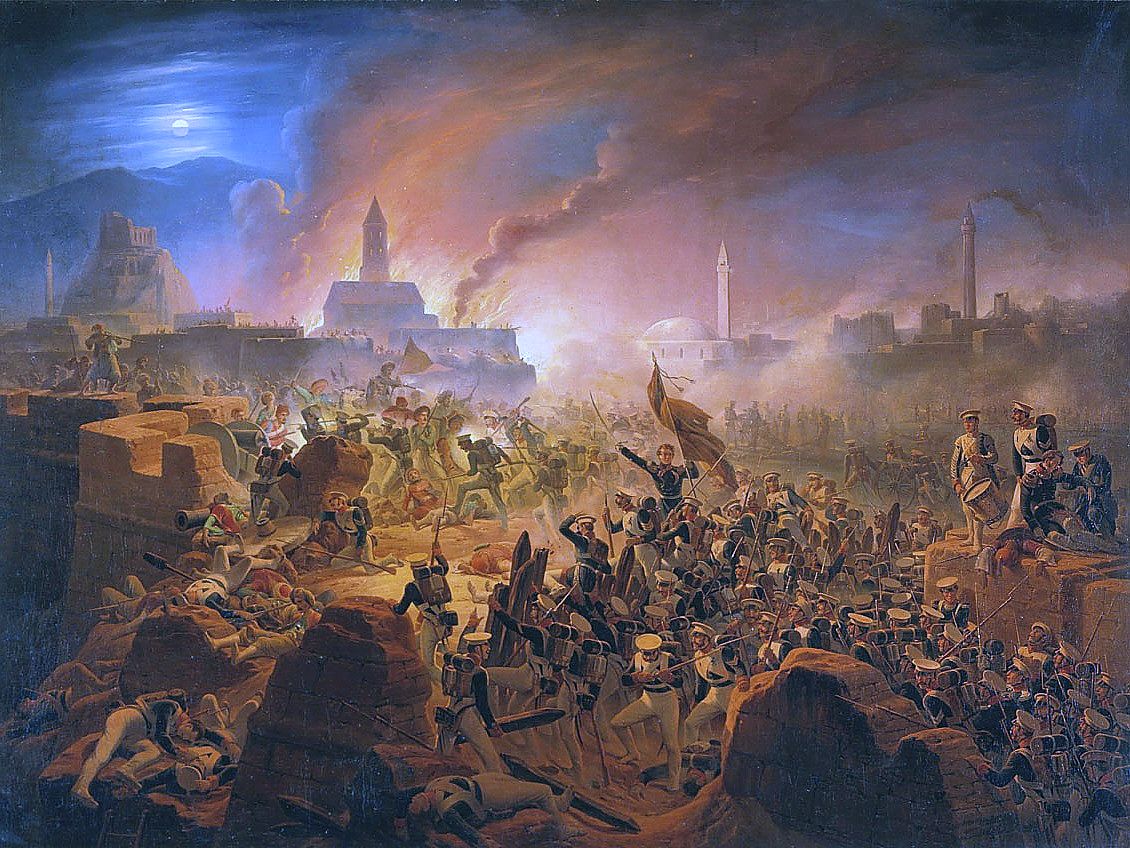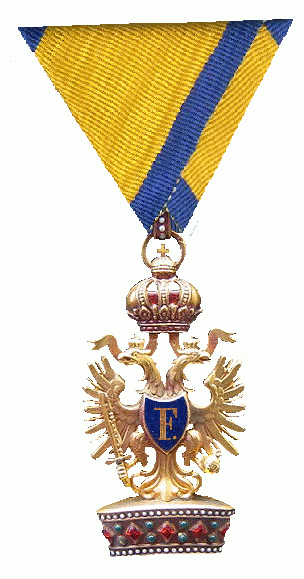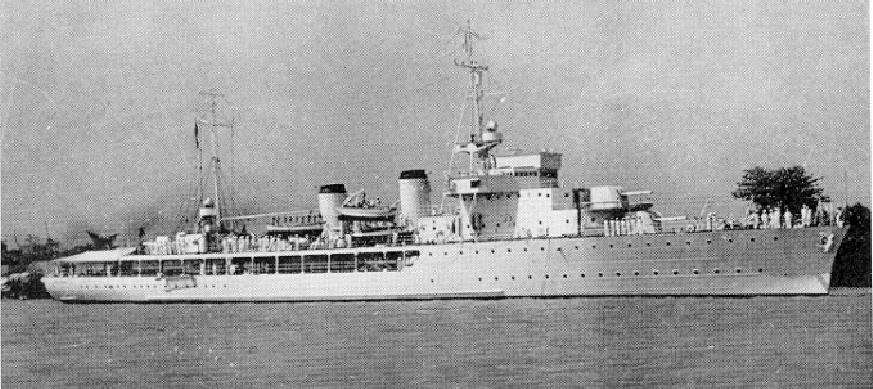|
Josef Von Romako
Josef Ritter von Romako (1828 – 5 June 1882) was an Austro-Hungarian naval architect in the 19th century. He was responsible for designing most of the ironclad warships of the Austro-Hungarian Navy, from the first vessels of the in the early 1860s to , built in the late 1870s and early 1880s. He was also responsible for designing the s. Career He was born in 1828 in Atzgersdorf in Lower Austria and studied at the ''Technische Universität'' (Technical University) in Vienna. He joined the Austrian Navy and was appointed a provisional cadet on 25 September 1849. On 1 November 1859, he became the ''Schiffbau Oberingeniuer'' (main shipbuilding engineer), and it was during this period that he designed the Austrian ships that saw action at the Battle of Lissa on 20 July 1866. Romako's designs tended to emphasize stronger armor than foreign contemporaries. On 1 November 1866, was promoted to the position of ''Schiffbau-Inspektor'' (Shipbuilding Inspector), and on 28 February 1 ... [...More Info...] [...Related Items...] OR: [Wikipedia] [Google] [Baidu] |
Anton Romako - Der Schiffsbau-Ingenieur Josef Von Romako Als Oberleutnant - 1236 - Österreichische Galerie Belvedere
Anton may refer to: People *Anton (given name), a list of people with the given name *Anton (surname), a list of people with the surname Places *Anton Municipality, Bulgaria **Anton, Sofia Province, a village *Antón District, Panama **Antón, a town and capital of the district *Anton, Colorado, an unincorporated town *Anton, Texas, a city *Anton, Wisconsin, an unincorporated community *River Anton, Hampshire, United Kingdom Other uses *Case Anton, codename for the German and Italian occupation of Vichy France in 1942 *Anton (computer), a highly parallel supercomputer for molecular dynamics simulations * ''Anton'' (1973 film), a Norwegian film * ''Anton'' (2008 film), an Irish film * Anton Cup, the championship trophy of the Swedish junior hockey league J20 SuperElit * Dynamite Anton, an name of the main protagonist of Antonblast, a 2024 video game and Antonball Deluxe ''Antonball Deluxe'', stylized in all caps, is a 2021 Puzzle video game, puzzle-Breakout clone, brick b ... [...More Info...] [...Related Items...] OR: [Wikipedia] [Google] [Baidu] |
Torpedo Cruiser
A torpedo cruiser is a type of warship that is armed primarily with torpedoes. The major navies began building torpedo cruisers shortly after the invention of the locomotive Whitehead torpedo in the 1860s. The development of the torpedo gave rise to the '' Jeune École'' doctrine, which held that small warships armed with torpedoes could effectively and cheaply defeat much larger battleships. Torpedo cruisers fell out of favor in most of the great power navies in the 1890s, though many other navies continued to acquire them into the early 1900s. The Imperial Japanese Navy rebuilt two light cruisers into torpedo cruisers during World War II. Unlike the earlier vessels, these ships were intended to launch their Long Lance oxygen torpedoes at extreme range at night to surprise enemy warships. They never saw action in their intended role, however, and were quickly converted into troop transports. History The torpedo cruiser emerged from the '' Jeune École'', a strategic nav ... [...More Info...] [...Related Items...] OR: [Wikipedia] [Google] [Baidu] |
1828 Births
Events January–March * January 4 – Jean Baptiste Gay, vicomte de Martignac succeeds the Comte de Villèle, as Prime Minister of France. * January 8 – The Democratic Party of the United States is organized. * January 22 – Arthur Wellesley, 1st Duke of Wellington succeeds Lord Goderich as Prime Minister of the United Kingdom. * February 10 – " Black War": In the Cape Grim massacre – About 30 Aboriginal Tasmanians gathering food at a beach are probably ambushed, shot with muskets and killed by four indentured "servants" (or convicts) employed as shepherds for the Van Diemen's Land Company as part of a series of reprisal attacks, with the bodies of some of the men thrown from a 60 metre (200 ft) cliff. * February 19 – The Boston Society for Medical Improvement is established in the United States. * February 21 – The first American-Indian newspaper in the United States, the '' Cherokee Phoenix'', is published. * February 22 – Treaty of Turkmenchay: ... [...More Info...] [...Related Items...] OR: [Wikipedia] [Google] [Baidu] |
Austro-Hungarian Navy Officers
Austria-Hungary, also referred to as the Austro-Hungarian Empire, the Dual Monarchy or the Habsburg Monarchy, was a multi-national constitutional monarchy in Central Europe between 1867 and 1918. A military and diplomatic alliance, it consisted of two sovereign states with a single monarch who was titled both the Emperor of Austria and the King of Hungary. Austria-Hungary constituted the last phase in the constitutional evolution of the Habsburg monarchy: it was formed with the Austro-Hungarian Compromise of 1867 in the aftermath of the Austro-Prussian War, following wars of independence by Hungary in opposition to Habsburg rule. It was dissolved shortly after Hungary terminated the union with Austria in 1918 at the end of World War 1. One of Europe's major powers, Austria-Hungary was geographically the second-largest country in Europe (after Russia) and the third-most populous (after Russia and the German Empire), while being among the 10 most populous countries worldwide. T ... [...More Info...] [...Related Items...] OR: [Wikipedia] [Google] [Baidu] |
Naval Architects From Austria-Hungary
A navy, naval force, military maritime fleet, war navy, or maritime force is the branch of a nation's armed forces principally designated for naval and amphibious warfare; namely, lake-borne, riverine, littoral, or ocean-borne combat operations and related functions. It includes anything conducted by surface ships, amphibious ships, submarines, and seaborne aviation, as well as ancillary support, communications, training, and other fields. The strategic offensive role of a navy is projection of force into areas beyond a country's shores (for example, to protect sea-lanes, deter or confront piracy, ferry troops, or attack other navies, ports, or shore installations). The strategic defensive purpose of a navy is to frustrate seaborne projection-of-force by enemies. The strategic task of a navy also may incorporate nuclear deterrence by use of submarine-launched ballistic missiles. Naval operations can be broadly divided between riverine and littoral applications (brown-water navy ... [...More Info...] [...Related Items...] OR: [Wikipedia] [Google] [Baidu] |
Anton Romako
Anton Romako (20 October 1832 – 8 March 1889) was an Austrian people, Austrian painter. Life Anton Romako was born in Atzgersdorf (now a district of Liesing, Vienna), as an illegitimate son of factory owner Josef Lepper and his Czech housemaid Elisabeth Maria Anna Romako (''Rhomako'', ''Romakho'', née '). His brother, Josef von Romako, became a Naval Architect-Inspector of Austro-Hungarian Navy. Romako studied painting at the Academy of Fine Arts Vienna (1847–49), but his teacher, Ferdinand Georg Waldmüller, considered him talentless. Later, he studied in Munich (1849) under Wilhelm Kaulbach, and subsequently in Venice, Rome and London. In the early 1850s, he studied privately in Vienna under Carl Rahl, whose style Romako adopted. In 1854 he began travels to Italy and Spain, and in 1857 settled in Rome as the favourite portrait, genre works, genre, and landscape art, landscape painter for the local colony of foreigners. In 1862 Romako married Sophie Köbel, the daughter ... [...More Info...] [...Related Items...] OR: [Wikipedia] [Google] [Baidu] |
Order Of Guadalupe
There were three Imperial Orders of the Mexican Empire, which were Order of chivalry, Orders of chivalry created to reward Heads of state and prominent people during the two periods of the Mexican Empire (other), Mexican Empire — the ' (), the ''Imperial Order of the Mexican Eagle'' (Spanish: Orden Imperial del Águila Mexicana), and the ' (Spanish: Imperial Orden de San Carlos). Imperial Order of Guadalupe * The Order of Guadalupe (originally: "National Order of Our Lady of Guadalupe") was established by Emperor Agustín de Iturbide, Agustín I of Mexico in the autumn of 1821, although its statutes would not be published until February 1822. It was originally divided into two classes: ''Grand Cross'' and ''Numerary Member''. After the abdication and death of Emperor Agustin I, the Order fell out of use and remained inactive for 30 years until Antonio López de Santa Anna convinced Pope Pius IX to recognize it in 1854. It fell into disuse again in August of that sam ... [...More Info...] [...Related Items...] OR: [Wikipedia] [Google] [Baidu] |
Order Of The Dannebrog
The Order of the Dannebrog () is a Denmark, Danish order of chivalry instituted in 1671 by Christian V of Denmark, Christian V. Until 1808, membership in the Order was limited to fifty members of noble or royal rank, who formed a single class known as ''White Knights'' to distinguish them from the ''Blue Knights'' who were members of the Order of the Elephant. In 1808, the Order was reformed and divided into four classes. The statute of the Order was amended in 1951 by a Royal Ordinance so that both men and women could be members of the Order. Today, the Order of the Dannebrog is a means of honouring and rewarding the faithful servants of the modern Danish state for meritorious civil or military service, for a particular contribution to the arts, sciences or business life, or for working for Danish interests. Insignia The ''badge'' of the Order is a white enamelled Flag of Denmark, Dannebrog cross (i.e., a cross pattée, the lower arm being longer than the others) with a red ... [...More Info...] [...Related Items...] OR: [Wikipedia] [Google] [Baidu] |
Order Of The Iron Crown (Austria)
The Imperial Order of the Iron Crown (; ) was one of the highest orders of merit in the Austrian Empire and Austria-Hungary until 1918. It was founded in 1815 by Emperor Franz I of Austria as a re-establishment of the original Order of the Iron Crown, which previously had been an order of the Napoleonic Kingdom of Italy. The order had three classes and, until 1884, all classes conferred automatic hereditary ennoblement. The third class conferred the rank of ''Ritter'', the second class conferred the rank of ''Baron'', and the first class conferred the title of Privy Councillor, the style of Excellency and the right to attend court. According to the order's statutes, only a limited number of members throughout the empire were allowed at any given time. The maximum number of 1st class knights was 20, for the 2nd class it was 30 and for the 3rd class 50, limiting the total number of members to 100 at any given time. History The Holy Roman Empire, ruled by the Habsburg dynasty, ga ... [...More Info...] [...Related Items...] OR: [Wikipedia] [Google] [Baidu] |
Aviso
An ''aviso'' was originally a kind of dispatch boat or "advice boat", carrying orders before the development of effective remote communication. The term, derived from the Portuguese and Spanish word for "advice", "notice" or "warning", an ''aviso'', was later adopted by the French and Portuguese navies to classify their medium-sized warships designed for colonial service. The term continued to be used in the French Navy to classify the patrol frigates until 2012, when the remaining ships of the class were reclassified as offshore patrol ships. It is equivalent to the modern use of " sloop" in other countries. Description The ''Dictionnaire de la Marine Française 1788–1792'' (by Nicolas-Charles Romme) describes ''avisos'' as "small boats designed to carry orders or dispatches". By the late 19th century, an aviso could be of several hundred tons displacement. Usually very lightly armed and often not significantly faster than battleships or cruisers, the aviso was no ... [...More Info...] [...Related Items...] OR: [Wikipedia] [Google] [Baidu] |
Hull (watercraft)
A hull is the watertight body of a ship, boat, submarine, or flying boat. The hull may open at the top (such as a dinghy), or it may be fully or partially covered with a deck. Atop the deck may be a deckhouse and other superstructures, such as a funnel, derrick, or Mast (sailing), mast. The line where the hull meets the water surface is called the waterline. General features There is a wide variety of hull types that are chosen for suitability for different usages, the hull shape being dependent upon the needs of the design. Shapes range from a nearly perfect box, in the case of scow barges, to a needle-sharp surface of revolution in the case of a racing multihull sailboat. The shape is chosen to strike a balance between cost, hydrostatic considerations (accommodation, load carrying, and stability), hydrodynamics (speed, power requirements, and motion and behavior in a seaway) and special considerations for the ship's role, such as the rounded bow of an icebreaker or the flat bot ... [...More Info...] [...Related Items...] OR: [Wikipedia] [Google] [Baidu] |
Casemate Ship
The central battery ship, also known as a centre battery ship in the United Kingdom and as a casemate ship in European continental navies, was a development of the (high- freeboard) broadside ironclad of the 1860s, given a substantial boost due to the inspiration gained from the Battle of Hampton Roads, the first battle between ironclads fought in 1862 during the American Civil War. One of the participants was the Confederate casemate ironclad , essentially a central battery ship herself, albeit a low-freeboard one. The central battery ships had their main guns concentrated in the middle of the ship in an armoured citadel. The concentration of armament amidships meant the ship could be shorter and handier than a broadside type like previous warships. In this manner the design could maximize the thickness of armour in a limited area while still carrying a significant broadside. These ships meant the end of the armoured frigates with their full-length gun decks. In the UK, the ma ... [...More Info...] [...Related Items...] OR: [Wikipedia] [Google] [Baidu] |








